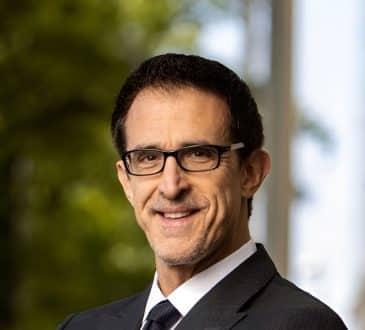Leaders, What Will You Do to Build a Strong and Agile Organizational Core for the Future?

As COVID-19 began to impact the world, most businesses reacted swiftly and transitioned from a growth economy to severely depressed consumer demand. As the outbreak took hold, leadership capacity was stretched, and business focus began to go through phases. While the timing of the phases varied from organization to organization, the progression was similar. One “ah ha” emerging from the COVID-19 reaction is that businesses need a more efficient and effective cultural, strategic, and execution model to quickly adapt to rapid, unforeseen changes in external impacts to their business. Given the likelihood of additional unforeseen shocks, what will you do to build a strong and agile organizational core?
When the COVID-19 outbreak occurred, organizations were forced to make tough decisions. Government guidance was immediate, creating a significant but necessary change to society, employees, families, communities, and businesses. Leadership was and continues to be tested. Given the need to instantly modify business operations, leaders were forced to channel their focus, and their initial emphasis was on “working with COVID-19”–as highlighted in the diagram below. The speed and breadth at which COVID-19 arrived and accelerated forced leaders to process excessive amounts of external information and quickly modify their business from a customer, product, operations, and people perspective. The initial focus included working from home, social distancing in the office and on the production floor, and technology to enable communication.
As it became clear that the economy and most businesses were being severely impacted, the focus shifted to survival and the various government programs available to lessen the impact. This was highlighted by the Paycheck Protection Program for small businesses and the increase in unemployment compensation among other federal, state, and local programs. As we entered the “COVID-19 Recession,” focus moved from survival and government support to creating an emergency 2020 plan.
The next area of focus is on what you will do when you exit the COVID-19 Recession (Exit Focus in the diagram above). The COVID-19 experience should make it obvious that the organizational core needs to be more agile and better prepared from a cultural and strategic perspective to execute quickly and effectively when markets shift. The truth is, COVID-19 accelerated many changes already taking place—such as social desires and technological capabilities related to working from home, economic deviations leading to multiple generations in individual households, and environmental views on commuting—that businesses were not addressing.
Your business’s COVID-19 exit and how you execute (final phase in the diagram) in the future will determine your organization’s long-term viability and success. This is a generational opportunity if you embrace the future and adapt your company—or it may be a deadly threat if you do not.
The following is a recommended path that builds agile organizations where employees are actively engaged in blending culture, strategy, and execution, enabling organizations to instantaneously react to changes while remaining focused on company potential. Called The Blendification® System, it is based on the fact that culture, strategy, and execution must be developed and worked in sync rather than autonomously. Here is a summary of the Blendification® steps to empower your organization to adapt to future shocks:
- Design and advance culture to remain focused on the organizational cause through shared motivation and responsibility.
Organizational culture is at the foundation of your ability to response and react to changing conditions. You have likely heard that strategies fail because of execution but underneath execution is culture. When your culture does not have the capacity or capability to adapt, strategic execution will fail. In a world where change is accelerating, the need to have a culture that is built for change is critical. The organization must be anchored by a clear cause that motivates the team, aligns focus, and encourages agility in actions. - Create a strategic operating model that fosters rigid strategic focus with agile strategic execution.
Strategic plans tend to lose steam after the planning is finished when market conditions change and the urgent takes priority over the important inside a company. Think of how many strategic plans were deleted or shelved as soon as the COVID-19 outbreak occurred. If the goal is to develop a strategic operating model rather than write a strategic plan, the opportunity for success will be enhanced. An effective strategic platform seamlessly integrates into and relies on the organization’s culture, setting the stage for effective execution. - Implement a deliberate execution system that is interwoven into the culture through empowered teams that can quickly adapt strategic actions.
An intentionally designed culture enables employees to modify strategic execution when markets and consumer behavior shifts. An efficient and effective execution model includes a series of operational-based meetings focused on clear strategic outcomes. When ongoing communication is intentionally designed around strategy, the execution model becomes part of the culture with strategy being the focal point.
The seamless development and implementation of culture, strategy, and execution enables organizations to realize their potential. When these three business components are unified, external changes are quickly recognized and internal actions are modified. Businesses typically view these components as separate and, by doing this, fail to ignite the power and agility of a connected system within an organization. In economic expansion cycles and downturns, this integrated approach yields the greatest outcomes.
Written by Dan Bruder. Have you read?
# Ranking of the World’s best cities for luxury shopping, 2020
# Ranking of the World’s best cities for millennials, 2020
# Ranking of the World’s best cities for expats to live and work, 2020
# Ranking of the World’s best cities for remote working jobs, 2020
Bring the best of the CEOWORLD magazine's global journalism to audiences in the United States and around the world. - Add CEOWORLD magazine to your Google News feed.
Follow CEOWORLD magazine headlines on: Google News, LinkedIn, Twitter, and Facebook.
Copyright 2025 The CEOWORLD magazine. All rights reserved. This material (and any extract from it) must not be copied, redistributed or placed on any website, without CEOWORLD magazine' prior written consent. For media queries, please contact: info@ceoworld.biz













